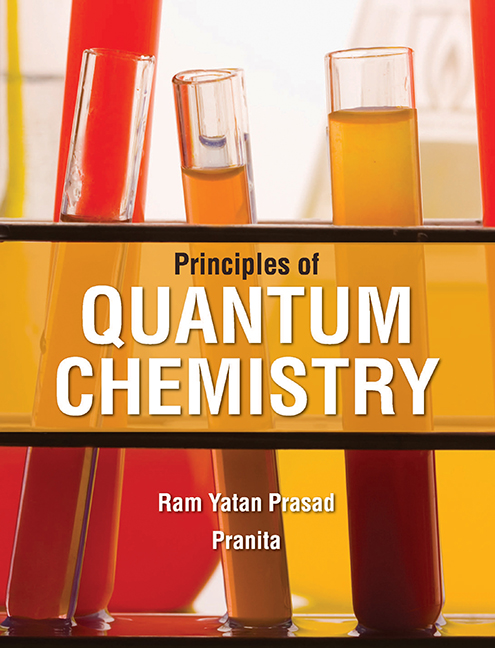Book contents
- Frontmatter
- Dedication
- Contents
- List of Figures
- List of Tables
- Foreword
- Preface
- 1 Quantum Theory
- 2 Wave–Particle Duality
- 3 Mathematical Techniques
- 4 Quantum Mechanical Operators
- 5 Postulates of Quantum Mechanics
- 6 The Schrödinger Equation
- 7 Playing with the Schrödinger Equation
- 8 Hydrogen Atom
- 9 Approximate Methods
- 10 Diatomic Molecules
- 11 Multi-electronic Systems
- 12 Polyatomic Molecules
- 13 Hückel Molecular Orbital Theory/Method
- 14 Density Functional Theory
- Glossary
- Appendix I
- Appendix II
- Appendix III
- Model Question Papers
- Index
6 - The Schrödinger Equation
Published online by Cambridge University Press: 02 December 2022
- Frontmatter
- Dedication
- Contents
- List of Figures
- List of Tables
- Foreword
- Preface
- 1 Quantum Theory
- 2 Wave–Particle Duality
- 3 Mathematical Techniques
- 4 Quantum Mechanical Operators
- 5 Postulates of Quantum Mechanics
- 6 The Schrödinger Equation
- 7 Playing with the Schrödinger Equation
- 8 Hydrogen Atom
- 9 Approximate Methods
- 10 Diatomic Molecules
- 11 Multi-electronic Systems
- 12 Polyatomic Molecules
- 13 Hückel Molecular Orbital Theory/Method
- 14 Density Functional Theory
- Glossary
- Appendix I
- Appendix II
- Appendix III
- Model Question Papers
- Index
Summary
The propagation of a periodic disturbance carrying energy is called the wave motion. At any point along the path of the wave motion, a periodic displacement or vibration about a mean position occurs. This may take the form of a displacement of air molecules (e.g., sound waves in air), of water molecules (wave on water), or of elements of a string or wire. The locus of these displacements at any instant is known as wave. The wave motion moves forward a distance equal to its wavelength in the time taken for the displacement at any point to undergo a complete cycle about its mean position. Waves in which the displacement or vibration takes place in the direction of propagation of the waves are called longitudinal waves, e.g., sound waves, but the waves in which the vibration or displacement occurs in a plane at right angles to the direction of propagation of the waves are called transverse waves. We are discussing the waves and wave motion, and therefore, we want to establish a relationship or an equation of wave motion. In order to do so, it will be convenient to consider the simplest type of wave motion, namely, the vibration of string, and then we shall derive an equation of wave motion.
Equation of wave motion
In deriving the equation for wave motion (e.g., vibration of string), let w = the amplitude of vibration at any point, the co-ordinate of which is x at a time t.
we can write
Differentiating Eq. (6.1) with respect to t, we shall get
This is the equation of wave motion in one dimension.
Equation (6.3) is a differential equation and it may be solved by the method of separating the variables, provided u remains constant. Thus w may be written as
w = f (x) .g(t)
where, f (x) = a function of x only
g(t) = a function of time t only
For the motion of standing waves, which occur in a stretched string, it is known to us that g(t) may be expressed as
g(t) = A sin2pƲt
where, Ʋ = frequency of vibration
A = constant, which is maximum amplitude
Therefore, Eq. (6.4) may be expressed as
- Type
- Chapter
- Information
- Principles of Quantum Chemistry , pp. 165 - 194Publisher: Foundation BooksPrint publication year: 2014



